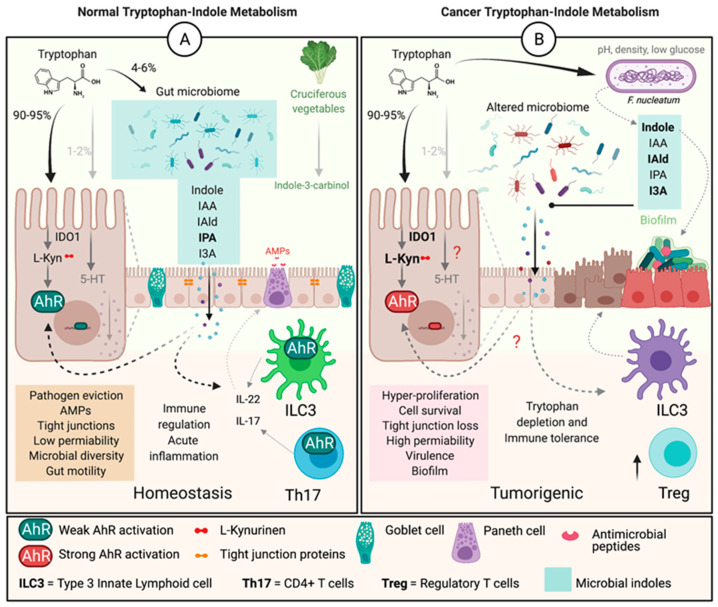Figure 2.
Tryptophan-indole metabolism in normal vs. colon carcinogenesis. (A) Under normal physiological conditions, Trp is mainly metabolised by hepatic or extrahepatic cells by IDO1 into L-Kyn, with the rest being metabolised by bacteria or converted to 5-hydroxytryptamine or seratonin. The bacteria convert Trp to indoles, and together with dietary indoles, IDO1 and L-Kyn are ligands for AhR. Indoles also regulate the production of cytokines in by ILC3 and Th17 cells, which result in production of AMPs and improved barrier function to regulate inflammation and maintain homeostasis. (B) In a tumorigenic environment IDO1 is overexpressed and Trp is depleted driving L-Kyn levels higher and constiuatively activating AhR. High L-Kyn leads to potentially stronger AhR activation and overproduction of IL-22/IL-17 and hyperproliferation, along with activation of Treg cells creating an immunotolerant environment permissive for tumor growth. It is unclear (?) how microbial indolic metabolites control epithelial or immune cell metabolism in the context of colon cancer.

